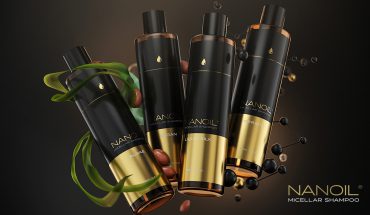We wear it for the whole life but know so little about it. Hair. It provides your scalp with heat control but it mostly adds charms. Do you know your hair type? Time to find out.
Every hair is placed in a follicle and it’s made up of two parts – a root (bulb) under the skin and a stem on the surface. Nutrients are delivered to hair through the bulbs. What else should you know? Hair is made up of three layers. There’s medulla inside. The cortex (built of keratin) makes up the whole hair structure.
All these parts are protected by an external coat made up of keratin in form of cuticle scales. The scales cling to the hair and to each other thanks to lipids. They have the ability to open and close. The ability is used e.g. during coloring.
Hair Types
One differentiation mentions long hair, bristly hair (eyelashes, eyebrows) and the so-called down. The hair growing on the head is exclusively long – has the strongest pigment and the longest life cycle (even a few years). Considering this kind of hair, there are different types, too – e.g. normal or damaged, fine or thick, straight or curly, dry or oily.
Looking at the structure of the external hair layer, there is:
• low porosity hair – with closed scales
• medium porosity hair – with slightly raised scales
• high porosity hair – with raised scales
How to identify hair porosity?
A trichologist – known as a hair doctor – gives the most reliable info. A microscope observation gives 100% certainty. Still, sometimes you can simply watch your hair e.g. the way your strands behave in contact with different ingredients (e.g. coconut oil). A test for defining the hair porosity may help, too. You answer a few questions about your hair condition and hair care routine.
MUST-KNOW!
The position of cuticle scales affects the condition of your hairdo. Consequently, it influences the choice of the best hair care method. If scales are closed, the hair keeps moisture longer and doesn’t lose the nutrients. At the same time, it’s hard to nourish because most substances have a problem with penetrating the strands. If the cuticles are open, it’s easy to nourish and moisturise the hair (it ‘drinks’ water and ‘eat’ products). On the other hand, this hair type loses these nutrients quickly, facing up to dehydration, breakage and roughness. Finding the balance is the key to success. You must choose hair oils and products that are right for your hair porosity.





